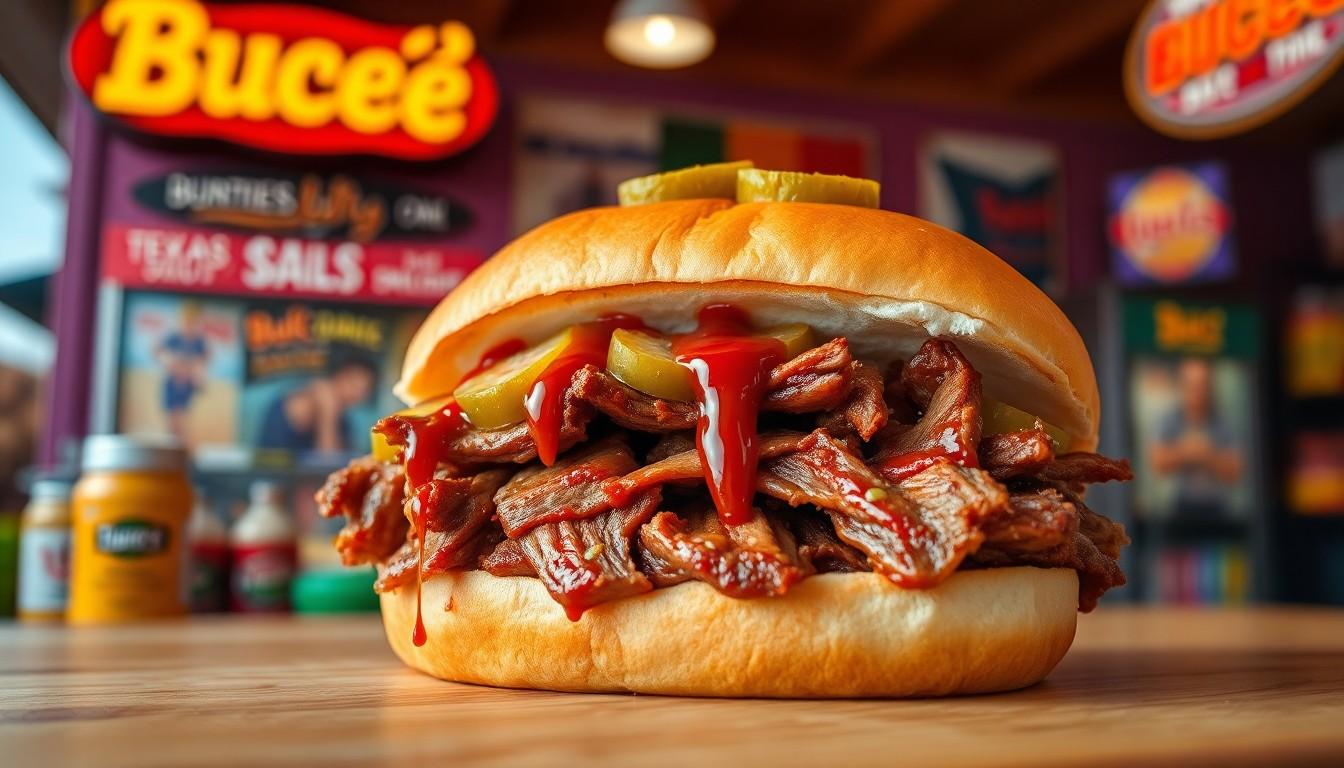Key Takeaways
- Quality Ingredients: Panera Bread prioritizes high-quality, fresh ingredients, significantly impacting menu prices due to responsible sourcing and preparation standards.
- Sourcing Practices: The chain emphasizes using organic, non-GMO, and humanely raised ingredients, which contribute to increased costs but align with customer values regarding health and sustainability.
- Labor and Service Quality: Higher labor costs arise from fair wages and extensive employee training, leading to an enhanced overall customer experience, justifying the premium pricing.
- Dining Experience: Investments in a comfortable, appealing restaurant environment and strategic location choices result in higher operational costs, reflected in menu prices.
- Menu Diversification: A varied menu catering to dietary preferences demands careful ingredient sourcing, further contributing to the overall cost structure while maintaining high standards.
- Competitive Pricing Strategy: Panera positions itself as a premium brand, with prices reflecting the quality of offerings, aligning with other fast-casual restaurants committed to similar values.
When you step into Panera Bread, you might find yourself wondering why the prices seem higher than your average café. It’s not just the ambiance or the fresh-baked bread; several factors contribute to the cost of your favorite salad or sandwich.
Panera focuses on quality ingredients, sourcing responsibly and prioritizing clean food options. This commitment to freshness and sustainability often comes with a price tag. Additionally, the company invests in a comfortable dining experience and excellent customer service, which also plays a role in the overall cost. Understanding these elements can shed light on why your meal at Panera Bread feels a little more premium than other fast-casual dining options.
Why Is Panera Bread So Expensive
Panera Bread stands out due to its focus on high-quality ingredients. The bakery-café chain emphasizes clean, fresh offerings, using no artificial preservatives, sweeteners, or flavors. This commitment to quality impacts the overall meal prices.
Ingredient Sourcing
Panera sources ingredients responsibly. The following factors contribute to the cost:
| Ingredient Type | Sourcing Method | Impact on Cost |
|---|---|---|
| Grains | Organic and non-GMO options | Higher supply costs |
| Produce | Seasonal, local sources where possible | Variable pricing |
| Proteins | Humanely raised and sustainable options | Increased supply chain costs |
Preparation Standards
Panera adheres to strict preparation standards. Meals are prepared fresh daily on-site, resulting in increased labor costs.
Dining Experience
Panera invests in creating a comfortable dining atmosphere. The ambiance includes inviting decor, seating arrangements, and free Wi-Fi, enhancing customer satisfaction. This investment influences menu pricing.
Customer Service
Panera emphasizes quality customer interaction. Staff training focuses on providing excellent service, leading to higher labor costs. Friendly, knowledgeable staff contribute to the overall dining experience.
Competitive Pricing
Pricing at Panera reflects market competition. While some fast-casual restaurants offer cheaper options, Panera positions itself as a premium brand. This ensures that customers receive higher-quality meals, justifying the price point.
Nutritional Value
Panera’s commitment to health-conscious meals adds value. Many menu items cater to dietary restrictions, providing options that are nutritious and satisfying. This health focus further enhances perceived value.
Summary
The combination of ingredient quality, responsible sourcing, preparation standards, dining experience, customer service, and nutritional value collectively explains the premium pricing at Panera Bread. Though costs may seem high, many customers appreciate these factors when making dining decisions.
Quality of Ingredients
Panera Bread prioritizes high-quality ingredients, which directly affects meal pricing. The company’s dedication to using premium, fresh components creates a significant value for customers.
Organic and Fresh Produce
Panera sources organic and seasonal produce, ensuring that all ingredients maintain a high nutritional standard. The commitment to fresh produce enhances flavor profiles and supports local farmers, resulting in higher supply chain costs. Here’s a breakdown of the types of produce used:
| Produce Type | Sourcing Method | Impact on Cost |
|---|---|---|
| Organic Greens | Locally sourced | Increases transportation costs |
| Seasonal Vegetables | Sustainably sourced | Varied availability affects pricing |
| Heirloom Tomatoes | Organic farmers | Higher price due to limited supply |
Sourcing Practices
Panera Bread emphasizes responsible sourcing, opting for ingredients that meet strict quality standards. This includes humanely raised proteins and antibiotic-free meats. These practices lead to increased costs, but they support sustainable farming and align with consumer values regarding health and wellness. Here’s a comparative overview of sourcing practices:
| Ingredient Type | Sourcing Practice | Cost Implication |
|---|---|---|
| Chicken | Humanely raised | Higher supplier prices |
| Grains | Organic and non-GMO | Premium pricing |
| Dairy | Hormone-free | Elevated market rates |
These sourcing strategies exemplify Panera’s investment in ingredient integrity, validating the higher price point through quality assurance.
Labor Costs
Labor costs significantly contribute to Panera Bread’s pricing structure, reflecting the company’s commitment to fair wages and staff welfare. You notice the impact of these costs in various aspects of the dining experience, from employee retention to service quality.
Employee Wages
Panera Bread offers competitive wages to attract and retain skilled employees. In 2021, the average hourly wage for crew members ranged from $12 to $18, depending on the region and role. This commitment to fair compensation ensures that employees remain motivated and engaged, ultimately enhancing the customer experience. Below is a breakdown of estimated hourly wages at Panera Bread:
| Role | Estimated Hourly Wage |
|---|---|
| Crew Member | $12 – $18 |
| Shift Leader | $15 – $20 |
| Assistant Manager | $20 – $25 |
| General Manager | $40,000 – $70,000 annually |
Training and Development
Panera Bread invests in comprehensive training programs for its employees. This investment includes onboarding, customer service training, and ongoing professional development opportunities. The company spends approximately $1,500 per employee each year on training initiatives. High-quality training leads to improved service and efficiency, which justifies the higher prices on the menu. Some areas of focus in training include:
- Customer service excellence
- Operational protocols
- Food safety standards
- Leadership development programs
By prioritizing employee development, Panera Bread enhances workforce proficiency, resulting in a consistently positive dining experience for customers.
Restaurant Environment
Panera Bread creates a unique dining environment that enhances the overall customer experience. This environment influences pricing, as investments in ambiance and location significantly boost operational costs.
Ambiance and Decor
Panera Bread prioritizes a warm and inviting atmosphere. The design features comfortable seating, natural lighting, and modern decor, enhancing the dining experience. The company invests heavily in aesthetic improvements and quiet spaces, facilitating a relaxed experience. Quality materials and thoughtful layouts increase initial setup costs and contribute to higher ongoing maintenance. The ambiance also encourages longer visits, leading to more significant customer spending.
| Ambiance Feature | Impact on Costs |
|---|---|
| Comfortable seating | Higher furniture and setup costs |
| Natural lighting | Increased utility expenses |
| Modern decor | Investment in quality materials |
| Quiet workspaces | Requires larger locations and upkeep |
Location Choices
Panera strategically selects locations in high-traffic areas, increasing property rental costs. Urban settings often attract a premium, but they also boost visibility and foot traffic. Higher rent expenses are reflected in menu pricing. Additionally, proximity to businesses and residential complexes caters to a diverse customer base, ensuring consistent patronage throughout the day.
| Location Factor | Effect on Pricing |
|---|---|
| High-traffic areas | Increased rent and operating costs |
| Urban settings | Premium property expenses |
| Proximity to businesses | Consistent customer flow |
| Near residential areas | Diversified customer base |
Pricing Strategy
Panera Bread employs a pricing strategy that reflects its commitment to quality and customer experience. This approach influences menu prices significantly, differentiated by factors such as menu diversification and competitive positioning.
Menu Diversification
Panera Bread offers a diverse menu that includes soups, salads, sandwiches, and bakery items, catering to various dietary preferences. This variety necessitates careful ingredient sourcing, often leading to higher costs.
| Menu Category | Examples | Impact on Pricing |
|---|---|---|
| Soups | Broccoli Cheddar, Chicken Noodle | Fresh, quality ingredients |
| Salads | Greek, Asian Crunch | Seasonal ingredients |
| Sandwiches | Turkey Avocado BLT, Caprese | Artisan bread selection |
| Bakery Items | Sourdough, Cinnamon Roll | Specialty baking techniques |
The commitment to using fresh, high-quality ingredients enhances flavor but raises preparation costs. Menu diversification not only appeals to health-conscious consumers but also positions Panera as a premium brand.
Competitor Comparisons
Panera’s pricing strategy also considers competitive positioning against other fast-casual eateries. While prices may be higher than typical sandwich shops, they align with similar establishments committed to quality.
| Competitor | Average Price Point per Meal | Key Differences |
|---|---|---|
| Chipotle | $10-$15 | Customizable fresh ingredients |
| Sweetgreen | $10-$17 | Focus on organic, seasonal greens |
| Panera Bread | $12-$18 | Artisan breads and cleaner food options |
This pricing allows Panera to maintain its reputation for high-quality offerings while justifying the premium prices through responsible sourcing, fresh preparation, and superior customer service.
Conclusion
Panera Bread’s pricing reflects its dedication to quality and customer satisfaction. By prioritizing fresh ingredients and responsible sourcing, you’re not just paying for a meal but for a commitment to health and sustainability. The investment in skilled labor and a welcoming dining atmosphere enhances your overall experience, making each visit worthwhile. While the prices may be higher than average, they align with the value you receive in terms of quality, taste, and service. Ultimately, when you choose Panera, you’re supporting a brand that stands by its principles and delivers on its promise of wholesome food.
Frequently Asked Questions
Why are prices higher at Panera Bread compared to typical cafés?
Panera Bread prices are higher due to its commitment to quality ingredients, responsible sourcing, and clean food options. The use of no artificial preservatives or flavors and the focus on fresh, daily preparations contribute to these elevated costs.
What types of ingredients does Panera Bread prioritize?
Panera prioritizes high-quality ingredients, sourcing organic grains, seasonal produce, and humanely raised proteins. These quality choices enhance nutritional standards but also raise supply chain costs, affecting overall pricing.
How does Panera’s labor cost impact pricing?
Labor costs significantly impact pricing at Panera Bread, as the company invests in fair wages and comprehensive training for staff. Competitive wages and ongoing training ensure high service quality, which adds to the overall meal cost.
How does Panera ensure a pleasant dining atmosphere?
Panera invests in creating a warm and inviting dining atmosphere with comfortable seating and modern decor. Such investments increase operational costs but enhance customer satisfaction, which is reflected in menu pricing.
How does Panera Bread’s sourcing practices compare to competitors?
Panera Bread’s sourcing practices emphasize responsible ingredient selection, including sustainably sourced proteins and organic produce. While prices are higher than typical sandwich shops, they align with other fast-casual eateries that prioritize quality, like Chipotle and Sweetgreen.
What is Panera’s approach to menu offerings?
Panera’s menu features a variety of soups, salads, sandwiches, and bakery items catering to diverse dietary preferences. This variety not only enhances flavor but also leads to higher preparation costs, impacting overall pricing.
Does Panera Bread offer any employee benefits?
Yes, Panera Bread offers competitive wages and invests in training programs for its employees. These initiatives enhance service quality and operational efficiency, contributing to a better dining experience for customers.





Leave a Reply